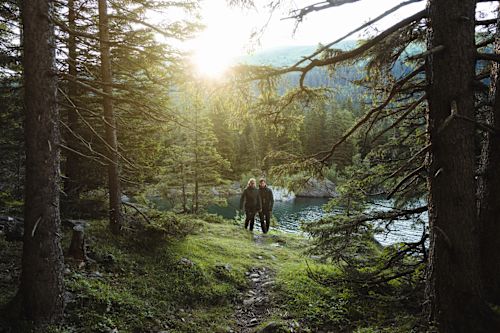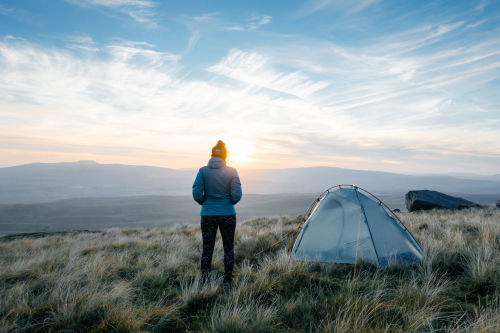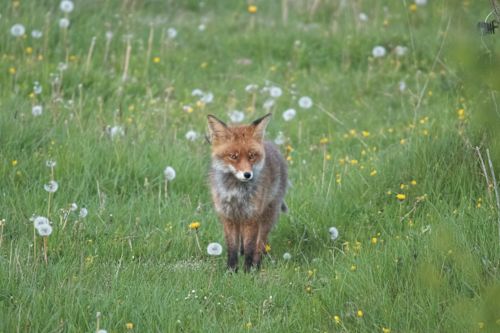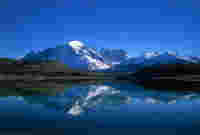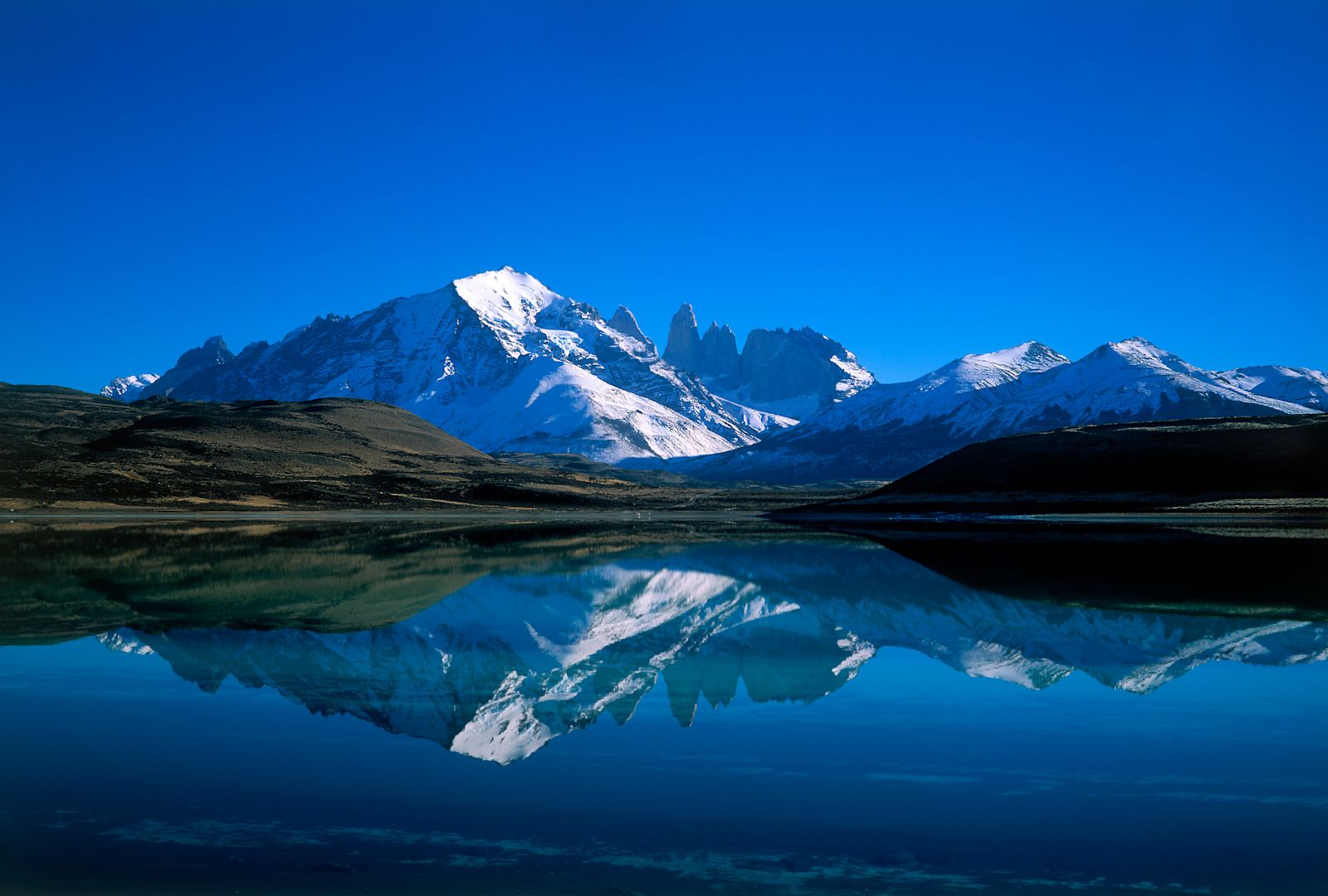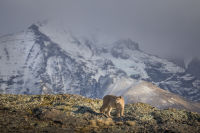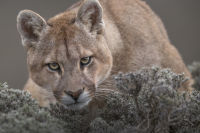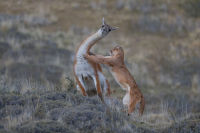After a quick discussion with my trackers, we decide to look for pumas on the hills behind the Laguna Amarga today. This is the territory of Colmillo, a female with three cubs. We came across her for the first time last year. Her litter was still very young at that point and had only been venturing out with their mother for a few days. Like Sarmiento, I visit Colmillo regularly too to document the growth of her cubs.
On an icy cold morning, still in pitch blackness, we set out from our hut and drive around the lagoon to a little hill. We park our vehicles here and continue on foot to a steep mountain slope. It’s slowly starting to get light. On the horizon, hazy outlines of the surrounding hills are slowly emerging from the darkness. Behind these, we can just about make out the mighty rocky peaks of the Torres del Paine. We walk to a hill and then separate to take up different observation posts. We stay in touch using radios.

Today, it’s my turn to spot the first puma. Through my binoculars, a few hundred yards away, I can see the silhouette of a big cat on the horizon. I use my radio to tell the others to make their way to me straight away. With painstaking care, we creep up toward the big cat. We need to make sure we don’t disturb the puma or lose sight of it. As if by magic, another puma suddenly emerges from the darkness below the first animal, and just seconds later we spot two more. It’s Colmillo with her three cubs, now almost fully grown. We’re delighted to see the family together today, because a few days ago we noticed that the female puma appeared to have had a hunting accident. One of her fangs has been hanging out of her mouth since then, and her lower jaw looks severely swollen and inflamed. None of us could say whether she would still be capable of hunting in this condition. But she seems to be well nourished. She has either managed to make a kill or her cubs have brought something down and shared it with her. Colmillo is an excellent hunter. She has always provided well for her three cubs and trained them in different hunting techniques.
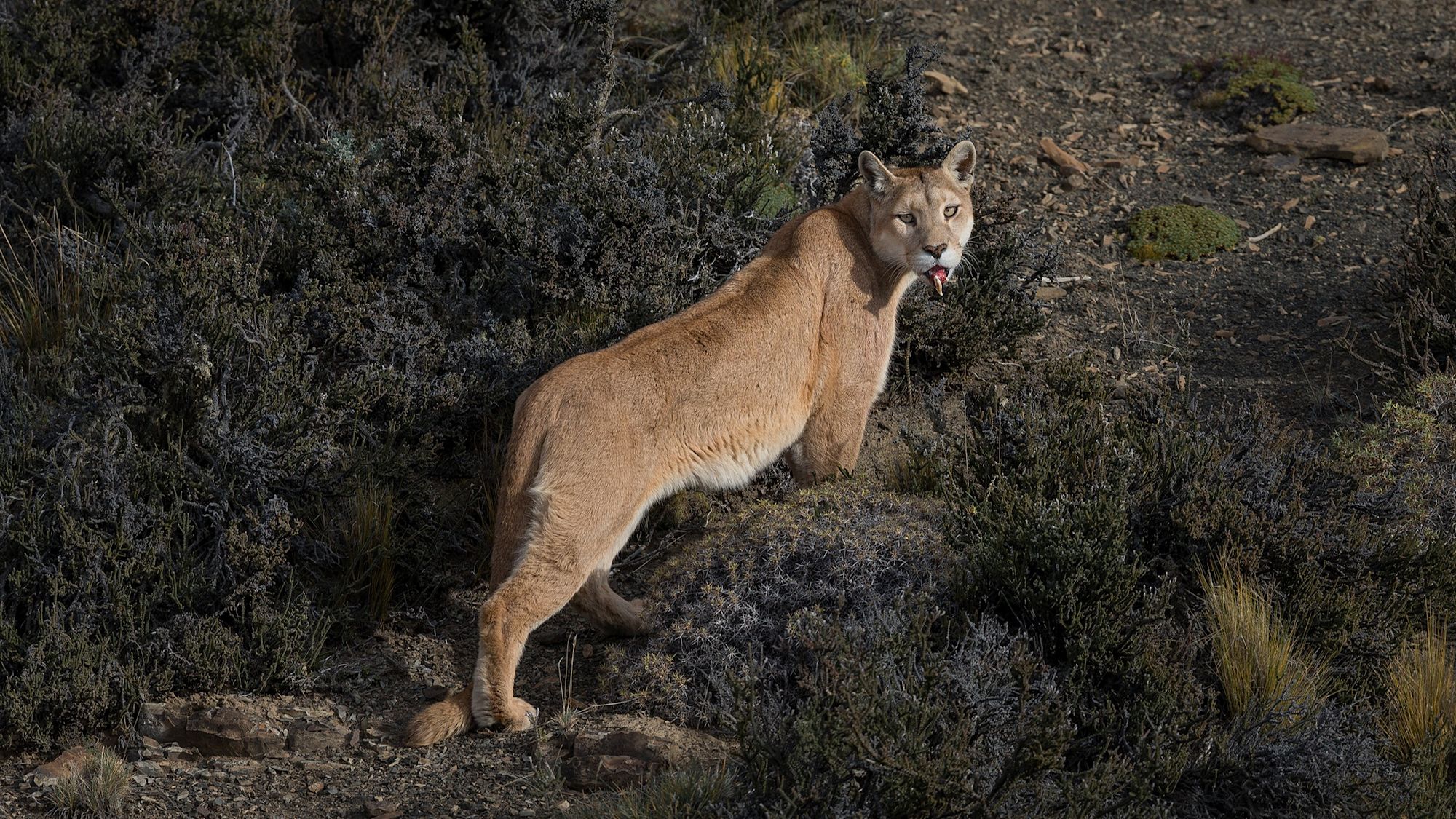
As it turned out, this would be the last time we saw Colmillo. Once the sun has risen, I take a few more photos of her, looking around a hill toward the north, but then she disappears – just as suddenly as she had appeared the previous winter.
Fortunately, the three cubs are now also very good hunters. Over the next few weeks, we keep coming across them prowling around together, and we find guanacos they have torn apart. The young pumas look very healthy. Toward the end of winter, they too go their separate ways. We only come across them by chance now and then. They are adults now and need to claim their own territory – they no longer tolerate other pumas in their area.
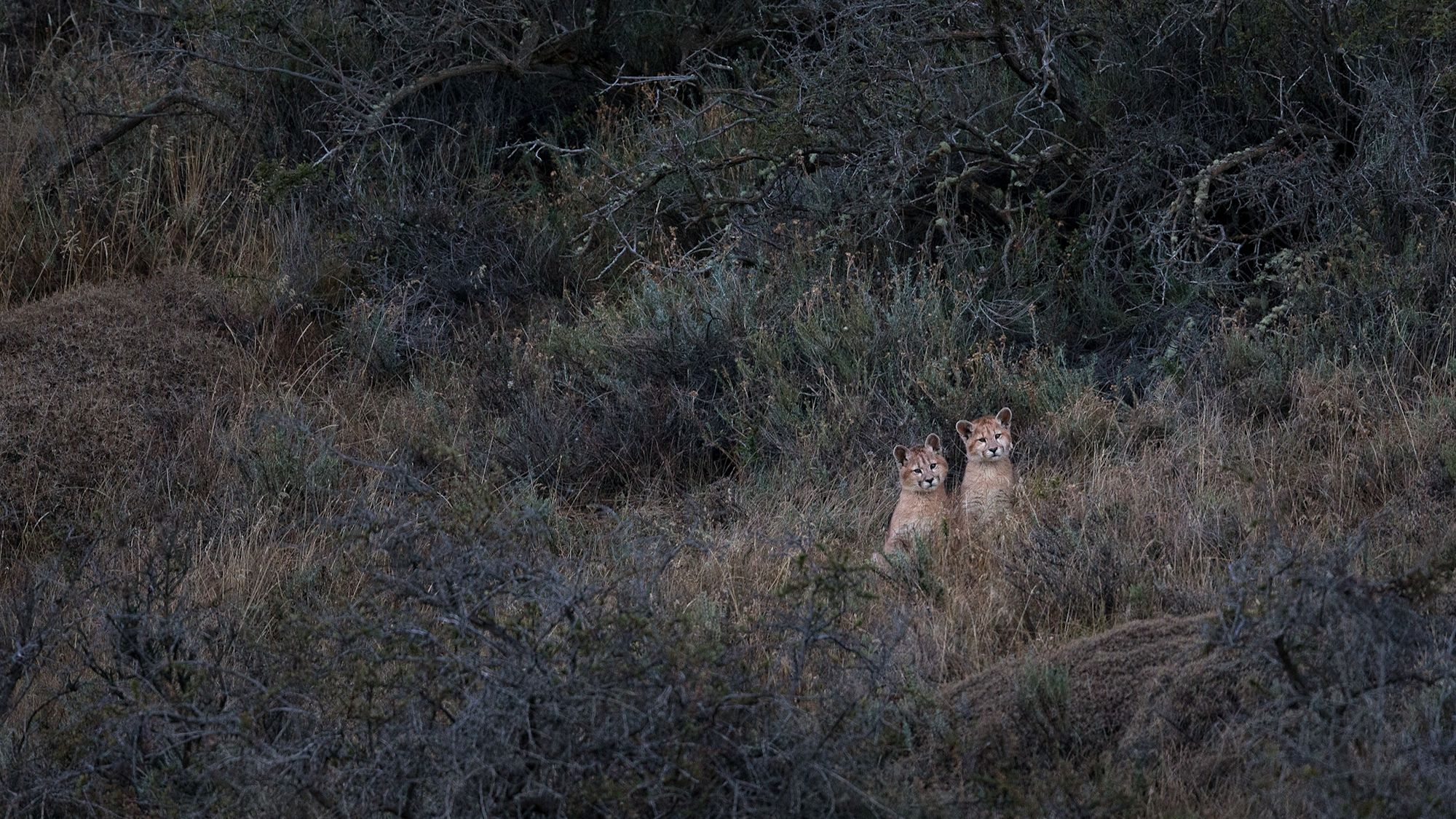
Colmillo has successfully raised her cubs at the Laguna Amarga and will now probably meet a male and start a new litter. Maybe one day she will make her way back to the lagoon.
With this story, we say farewell to these exciting adventures watching pumas in the Torres del Paine National Park. If you would like to find out more about these fascinating animals, we recommend the book PumaLand by Ingo Arndt. With kind permission, we are sharing some of the stories from this book with our readers.
About the TORRES DEL PAINE National Park
The spectacular landscape and its inhabitants make this habitat at the end of the world a very special place. As well as timid pumas, it is also home to all kinds of interesting wildlife.
In particular guanacos, with around 4,000 currently living in the National Park. Other mammals you regularly encounter here are the little Pampas foxes, brown-bristle armadillos, and skunks. The National Park is also home to a wide variety of indigenous bird species. The Andean condor, a member of the New World vulture family, is particularly impressive. It is one of the few birds with a wingspan that can reach in excess of three meters (ten feet). Weighing up to 15 kilograms (33 lb), it’s so heavy it struggles to take off and stay airborne when there’s no wind. Condors actually benefit from the presence of the pumas as they feed on their leftover prey. There are insects in the area too, of course, but you often don’t see them at all in strong winds. They seek out protection close to the ground to avoid being blown away.
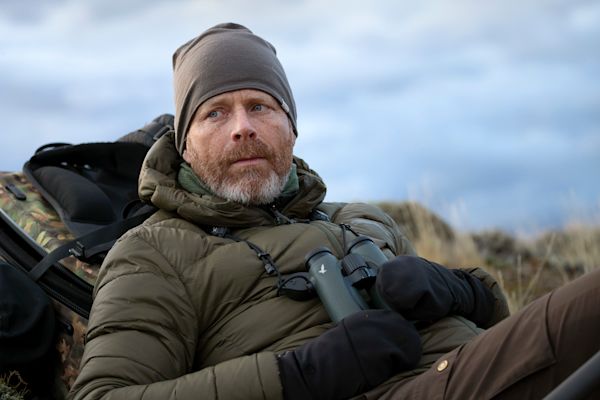
About the author
Ingo Arndt
Ingo Arndt was born in Frankfurt am Main, Germany. From early childhood, he spent every single minute of his spare time outdoors in nature. Soon he realized that photography was a useful tool in environmental protection, so, after finishing school in 1992, Ingo plunged into the adventurous life of a professional photographer. Since then, he has traveled around the globe for extended periods as a freelance wildlife photographer, photographing reports in which he portrays animals and their habitats. In the past few years he has been mainly on assignment for GEO and National Geographic Magazine. With his images, Ingo wants to stimulate and increase the awareness of his viewing audience and show them the magnificence of nature.
His adventures with the pumas in Torres del Paine National Park have also been published in the book PumaLand (2019).

